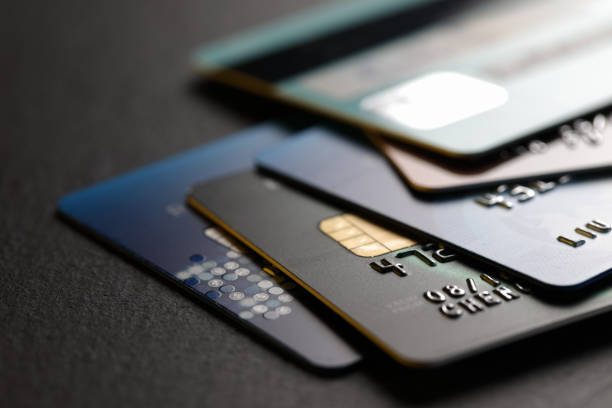EBT (Electronic Benefit Transfer) is a convenient system used to distribute government assistance programs, such as SNAP (Supplemental Nutrition Assistance Program), TANF (Temporary Assistance for Needy Families), and WIC (Women, Infants, and Children). Traditionally, EBT benefits were accessed through a physical card. However, in recent years, alternative methods have emerged to provide access to EBT benefits without a physical card. In this article, we will explore the various methods and technologies that enable EBT usage without a card.
Understanding EBT without a Card:
EBT without a card refers to the ability to access and use EBT benefits through alternative means, such as digital platforms and mobile applications. These methods eliminate the need for a physical EBT card and offer greater convenience to beneficiaries.
Registering for EBT without a Physical Card:
To register for EBT without a physical card, beneficiaries can visit their state’s EBT website or contact the EBT customer service helpline. During the registration process, individuals will need to provide personal information and verify their eligibility for the specific assistance program they are enrolled in.
Alternative Methods for Accessing EBT Benefits:
Several alternative methods are available for accessing EBT benefits without a card. These methods include utilizing virtual cards, digital wallets, and linking EBT benefits to a digital payment platform. These options enable beneficiaries to make purchases and transactions using their smartphones or other digital devices.
Setting up an EBT Account Online:
Setting up an EBT account online is a simple process. Beneficiaries can visit their state’s EBT website and follow the instructions provided. They will need to create an account by providing their personal details, including their name, address, and Social Security number. Once the account is set up, beneficiaries can access their EBT benefits online.
Mobile Apps for Managing EBT Benefits:
Many states now offer mobile applications specifically designed for managing EBT benefits. These apps allow beneficiaries to check their balance, view transaction history, locate participating stores, and even scan barcodes to check item eligibility. By using these mobile apps, beneficiaries can conveniently manage their EBT benefits on the go.
Using Your Smartphone for EBT Transactions:
With the advancement of technology, beneficiaries can now use their smartphones to complete EBT transactions. By downloading and installing the designated EBT app provided by their state, beneficiaries can make purchases by scanning a QR code or entering their EBT account details directly into the app.
Biometric Authentication for EBT Access:
Some states have implemented biometric authentication methods for EBT access. This technology uses unique physical characteristics, such as fingerprints or facial recognition, to verify the identity of beneficiaries. By using biometric authentication, beneficiaries can securely access their EBT benefits without the need for a physical card.
Voice Recognition Technology for EBT Transactions:
Voice recognition technology enables EBT users to complete transactions by simply speaking their commands. By integrating voice recognition capabilities into EBT systems, beneficiaries can securely access their benefits, make purchases, and manage their accounts using voice commands, eliminating the need for physical cards or manual input.
EBT QR Code Payments:
EBT QR code payments revolutionize the way beneficiaries make purchases. With this method, users can scan QR codes at participating stores, instantly deducting the purchase amount from their EBT balance. This contactless and efficient payment option enhances convenience and streamlines the transaction process for EBT users.
EBT Virtual Cards and Digital Wallets:
Virtual cards and digital wallets provide EBT users with a virtual representation of their benefits. By linking their EBT accounts to a digital wallet, beneficiaries can securely store and manage their funds digitally. Virtual cards can be used for online purchases, while digital wallets offer a centralized platform for accessing and utilizing EBT benefits.
Linking EBT Benefits to a Digital Payment Platform:
By linking EBT benefits to a digital payment platform, users gain greater flexibility and accessibility. This integration enables beneficiaries to seamlessly use their EBT funds alongside other payment methods, expanding their purchasing power and simplifying financial transactions.
Contactless Payment Options for EBT Users:
In response to evolving technologies, contactless payment options have emerged for EBT users. These methods, such as tap-to-pay and near-field communication (NFC) technology, allow beneficiaries to make purchases by simply waving or tapping their smartphones or cards at compatible payment terminals. Contactless payments provide a hygienic and efficient way to utilize EBT benefits.
Exploring EBT Payment Alternatives:
Beyond the traditional card-based approach, there is a wide range of EBT payment alternatives available. These include mobile apps, digital vouchers, prepaid debit cards, and electronic checks. Exploring these options empowers beneficiaries to select the method that best suits their needs, enhancing their EBT experience.
Resources for EBT Users Without a Card:
For EBT users who do not possess a physical card, various resources can assist in accessing and managing benefits. State-specific EBT websites, customer service helplines, and online assistance portals offer guidance on alternative methods, registration processes, and troubleshooting. These resources ensure that beneficiaries without a card can still enjoy the benefits of EBT without any significant hindrance.
Conclusion:
In conclusion, EBT has evolved to provide beneficiaries with a range of innovative options for accessing and utilizing their benefits. Voice recognition technology, EBT QR code payments, virtual cards and digital wallets, linking to digital payment platforms, contactless payment options, and alternative methods empower users to conveniently leverage their EBT funds. By exploring these payment alternatives and utilizing available resources, EBT users can seamlessly navigate the digital landscape, maximizing the advantages of EBT programs in a user-friendly and efficient manner.
